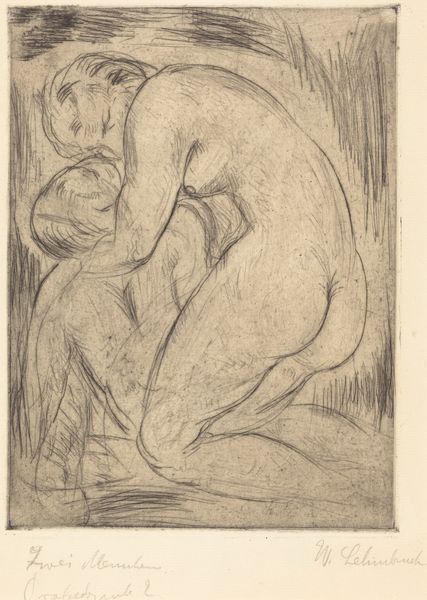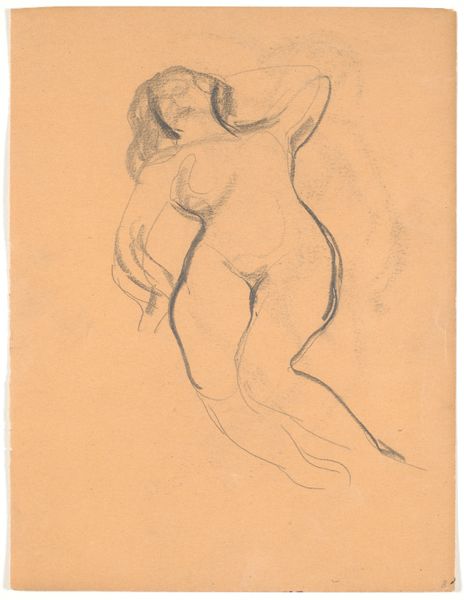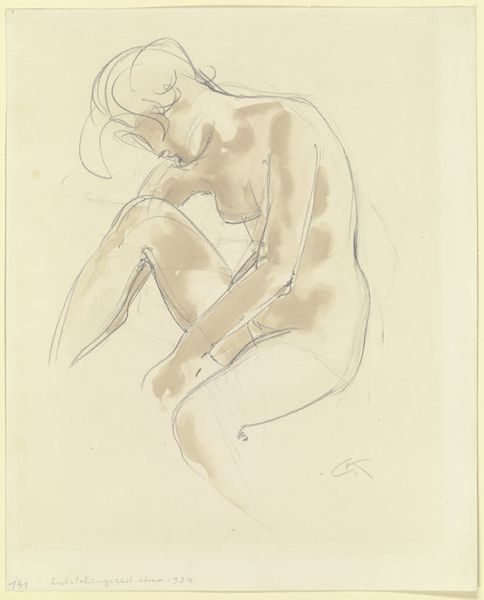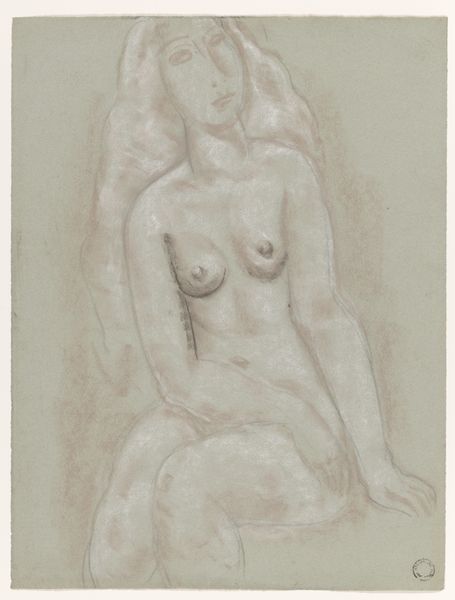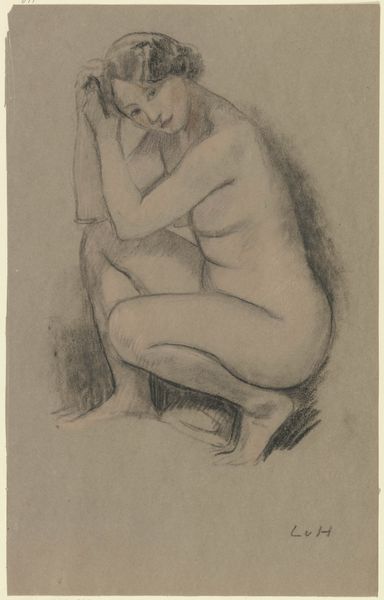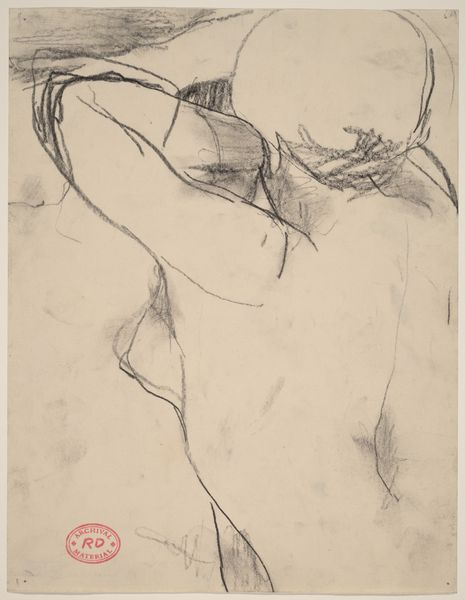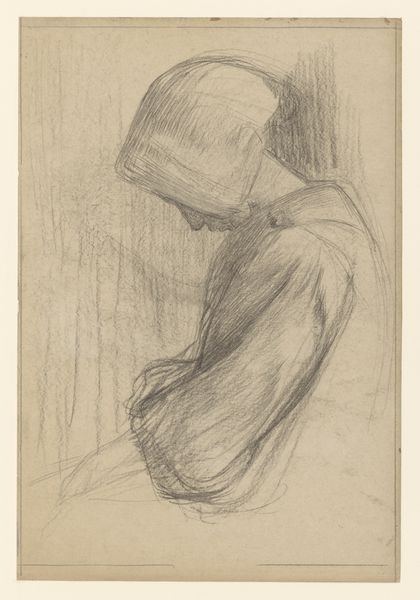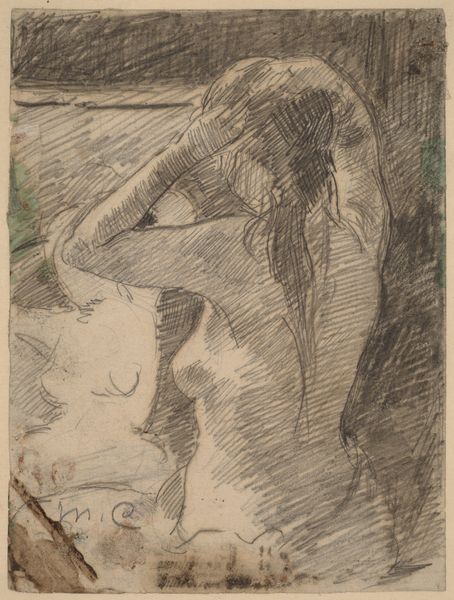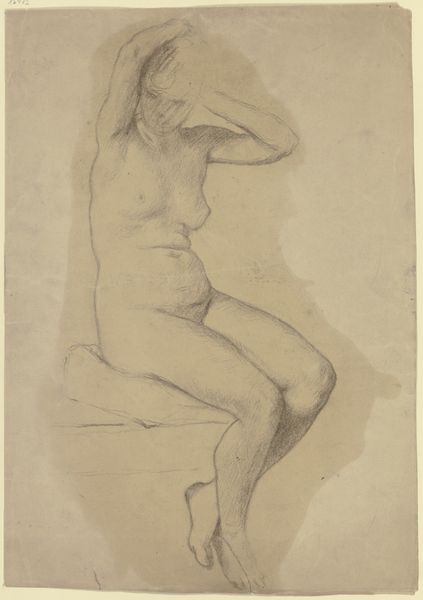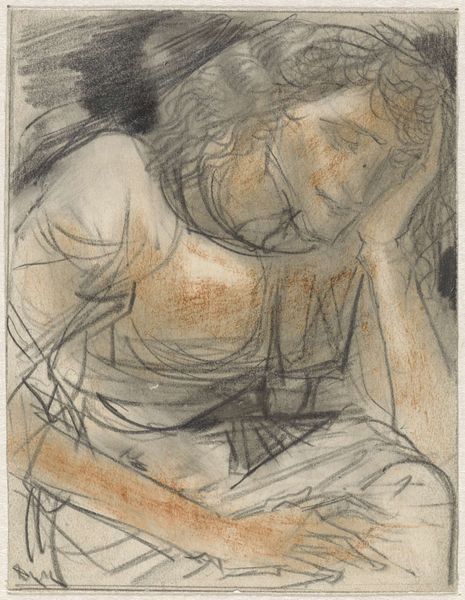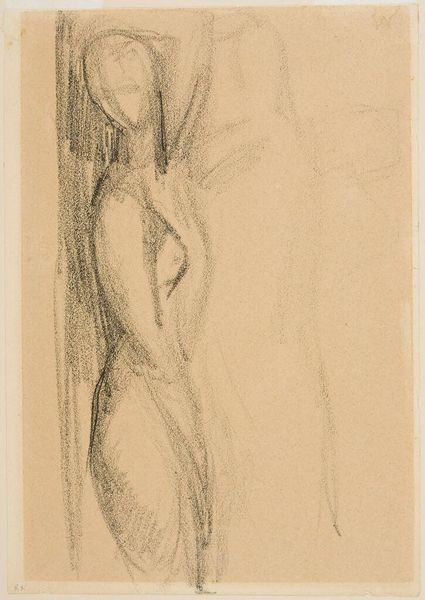
drawing, paper, charcoal, pastel
#
portrait
#
drawing
#
impressionism
#
charcoal drawing
#
figuration
#
paper
#
portrait drawing
#
charcoal
#
pastel
#
nude
Copyright: Public Domain
Curator: Let's dive in. Editor: This is Degas’s "Study of the Nude," from around 1888 to 1892. It’s rendered in charcoal and pastel on paper. What I immediately notice is the raw, almost vulnerable, quality of the pose and the visible mark-making. What do you see in this piece, especially thinking about Degas' broader practice? Curator: I’m struck by Degas's focus on the materiality of the work itself. Look at the paper – its texture and tone clearly inform the drawing. He isn't trying to disguise the pastel and charcoal strokes; they are deliberately visible. The smudging and blending are critical, aren’t they? How do those specific manipulations shape our understanding? Editor: They definitely create a sense of depth and volume. But what does that signify beyond the purely aesthetic? Curator: Consider the labor involved. Each application of charcoal, each stroke of pastel, each blending movement—they all signify time and effort. Degas’s choice to emphasize these manual processes elevates the status of “drawing” traditionally considered a preparatory or lesser art. This challenges established hierarchies between 'finished' paintings and preparatory studies. How does that resonate within the art market? Editor: That's interesting. By foregrounding the process and materials, is he making a commentary on the art world's focus on the polished final product, rather than the means of production? Curator: Exactly. He brings the unseen labour into the spotlight, subtly critiquing the commodification of art and emphasizing the value inherent in the making itself. The deliberate use of pastel and charcoal – accessible materials – democratizes the image, shifting focus to technique rather than costly mediums. What do you think that shift achieves? Editor: I think it prompts us to question how value is assigned to art, looking beyond just the surface to the work and materials involved. It makes you think. Curator: Precisely. This study provides a material lens through which to view not only Degas’s work, but the entire system of art production and consumption during his time. Editor: I never thought about it like that! Now I am eager to learn about other sketches made of this type of material. Thank you!
Comments
No comments
Be the first to comment and join the conversation on the ultimate creative platform.
